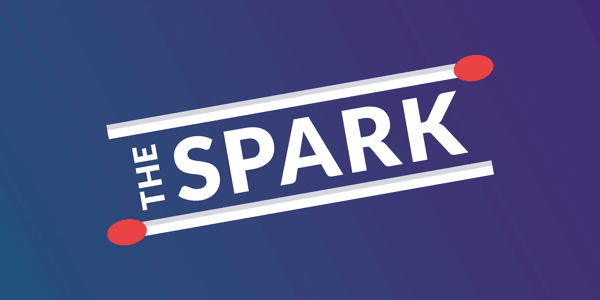Out With the Old, In With the NewCiao for now, LinkedIn Stories. The professional networking site will officially suspend Stories in its current design on September 30, 2021. In the short year or so since the feature was rolled out, LinkedIn says (in a farewell blog post) it learned users want videos that live on their profiles and don't disappear after 24 hours. Additionally, it found users are looking for creative editing tools that Stories doesn’t offer. While we bid adieu to our dear friend Stories, we know LinkedIn is taking those lessons learned into its next video development. Stay tuned!
In the meantime, LinkedIn isn’t leaving us hanging without any cool tricks. An account director at LI posted that organizations can now track page performance against competitors. Love ‘em or hate ‘em; either way, brands need to keep up with the competitors (#KUWTC). And, with this update, brands can compare new followers, total followers, engagements, and posts and use these stats to gauge how their competitors are successfully (or unsuccessfully) executing a social media strategy and take notes.
TL;DR: LinkedIn is removing Stories and introducing competitor metrics for company pages. Brands should keep an eye out for LI’s next video venture while capitalizing on competitive analytics.
Twitter TransformationsTwitter marketers: We’ve got news for you. Twitter is making headlines (and newsletter recaps) yet again with the release of two long-awaited updates: Super Follows and Safety Mode.
While Twitter has been teasing Super Follows for a while, the platform is finally rolling out the feature for its first group of test subjects. These pre-approved users can now charge a subscription fee (capped at $9.99 a month) to their followers to give them access to bonus content and conversations — think behind-the-scenes stories, personal Q&As, or early-access previews. While the feature is still only available to a limited group of users (primarily high-profile influencers), marketers are keeping an eye on the update for the chance to provide exclusive content to their most loyal customers.
Survey SaysIt's the age-old question for digital marketers: Should you pull a Halara and pay to place your ads for your workout dress all over TikTok or channel your inner Casper Mattress and put an advertisement in every single Spotify podcast? Okay, we’re not sure that anyone has ever asked themselves that exact question, but deciding which platform to advertise on is a common debate for marketers. A recent study from analytics company Kantar on consumer views of advertising across media could help you with that. For example, the survey revealed that consumers are most receptive to podcast ads, among a host of helpful insights. And Spotify took the top spot as the most trustworthy advertising platform. But trustworthiness isn’t necessarily everything — the survey also revealed that consumers view TikTok as the most innovative place for advertisers. The video platform also hosts the most "fun and entertaining" ads, according to consumers.
Whichever platform you choose to advertise on, it's clear that the mode of delivery is an integral part of the message. And how a consumer views a platform affects how they view your content on it. Marketers should look beyond reach or frequency and dig deeper into customer sentiment to strategically choose where they want their communication to appear.
TL;DR: A new research report revealed insights into how consumers view advertisements in different media and on social platforms. Brands need to keep this customer sentiment in mind when choosing the best destination for their paid content.
What Lit Us Up
Marketing Into the MetaverseFor the Millennials that just read this week’s WLUU headline: Don’t worry, metaverse isn’t another word made up by Gen Z. The term was first coined in the 1993 novel “Snow Crash” and refers to a 3D realm that people navigate as an avatar. Or, as Mark Zuckerberg calls it, the successor to the mobile internet. You might recognize metaverse virtual household names like Roblox or Fortnite – Gen Z and Gen Alpha certainly do. In fact, according to Fortune, 87 percent of Gen Z interact with these virtual worlds at least weekly, if not daily.
Hyundai and Vans recently dipped their toes into the ‘verse through their partnership with Roblox. The “Hyundai Mobility Adventure” is a virtual space with five theme parks that showcase Hyundai’s future mobility products. Likewise, “Vans World” is a digital skatepark where gamers can try on virtual gear. Vehicles and sneakers don’t have much in common, but the campaigns do by appealing to younger generations through new mediums.
Because teens are turning away from traditional mediums, brands can learn from Hyundai and Vans by tuning into the metaverse. No thirteen-year-old is buying a Hyundai now (hopefully), but the company is creating awareness and trust amongst its future customers. The metaverse is an open realm of creative opportunity and unchartered waters for marketers. There’s no playbook saying what you can or can’t do — just a 3D space waiting for the next brand to make a splash.
TL;DR: Hyundai and Vans took their marketing to a whole new universe, literally. In their new partnership with Roblox, the companies are marketing to younger generations through a virtual world known as the metaverse. Brands should consider innovative ideas to enter into this new digital sphere and appeal to the youngins’. (Was this email forwarded to you? Sign up here.)
|
-1.png?upscale=true&width=346&upscale=true&name=Tier%20One%20logo_color%20(1)-1.png)


